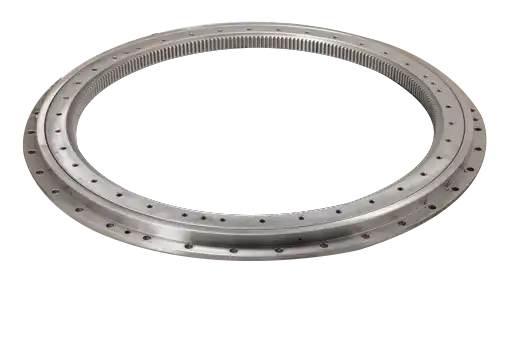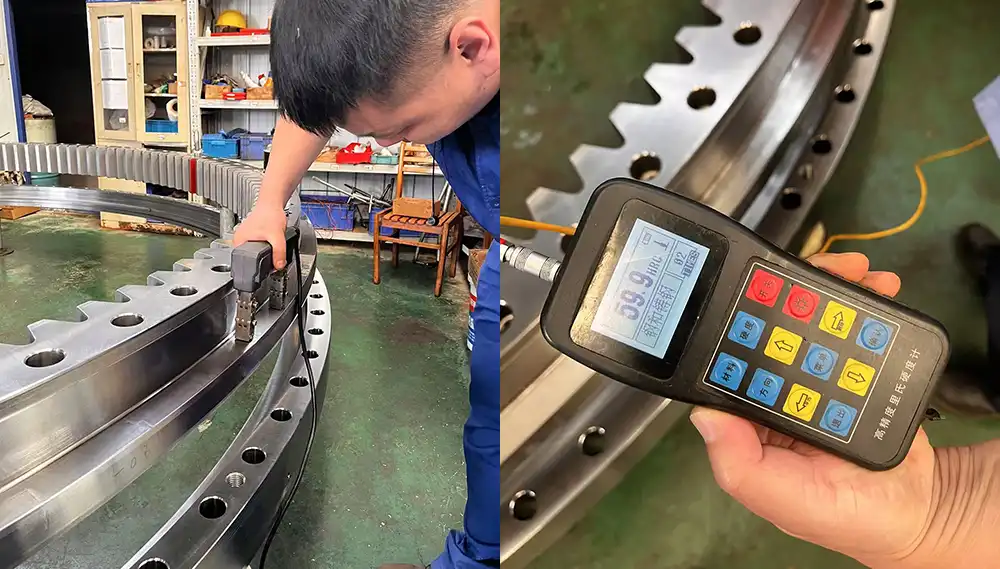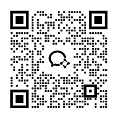How are Slewing Rings Maintained?
Slewing rings are critical components in numerous industrial and mechanical applications, playing a pivotal role in enabling smooth rotational movement across various machinery and equipment. This comprehensive guide delves into the essential aspects of maintaining these precision-engineered bearings, exploring the intricate processes that ensure their optimal performance, longevity, and reliability in challenging operational environments.

What Are the Key Inspection Techniques for Slewing Rings?
Visual Inspection Protocols
Conducting thorough visual inspections forms the cornerstone of effective slewing ring maintenance. Maintenance professionals must systematically examine the entire surface of slewing rings, carefully scanning for any signs of wear, corrosion, or potential damage. During these detailed assessments, technicians look for microscopic cracks, surface irregularities, discoloration, or any subtle indications of structural compromise. The complexity of slewing rings demands a meticulous approach, where even the smallest imperfection can signal potential future mechanical failures.
Experienced engineers utilize specialized lighting and magnification tools to enhance their visual examination. They pay particular attention to critical areas such as raceway surfaces, sealing mechanisms, and mounting interfaces. By establishing a comprehensive baseline through initial visual inspections, maintenance teams can develop predictive strategies that prevent unexpected equipment downtime and extend the operational life of slewing rings.

Non-Destructive Testing Methods
Non-destructive testing represents a sophisticated approach to slewing ring maintenance, enabling comprehensive evaluation without causing any structural damage. Ultrasonic testing emerges as a primary technique, utilizing high-frequency sound waves to detect internal material discontinuities and assess structural integrity. Skilled technicians can identify potential defects such as subsurface cracks, material inconsistencies, and developing wear patterns that remain invisible to conventional visual inspections.
Magnetic particle inspection provides another critical non-destructive method, particularly effective for ferromagnetic slewing rings. By applying magnetic fields and introducing fine magnetic particles, technicians can reveal surface and near-surface discontinuities with remarkable precision. This technique highlights potential stress concentrations, material fatigue, and early-stage structural degradation, allowing for proactive maintenance interventions.
Advanced Diagnostic Technologies
Emerging diagnostic technologies are revolutionizing slewing ring maintenance, introducing sophisticated monitoring capabilities. Vibration analysis and thermographic imaging represent cutting-edge approaches that provide real-time insights into bearing performance. These advanced techniques enable continuous monitoring of operational conditions, detecting subtle changes in temperature, mechanical stress, and potential wear mechanisms.
How Can Lubrication Strategies Optimize Slewing Ring Performance?
Selecting Appropriate Lubricants
Selecting the most suitable lubricant represents a critical decision in slewing ring maintenance. Different operational environments demand specialized lubrication strategies tailored to specific mechanical requirements. High-temperature industrial settings require lubricants with exceptional thermal stability, while marine applications necessitate corrosion-resistant formulations that can withstand aggressive environmental conditions.
Technicians must consider multiple factors when choosing lubricants, including operational temperature range, load characteristics, rotational speeds, and potential environmental contaminants. Synthetic lubricants often provide superior performance, offering enhanced protection against extreme temperatures, reduced friction, and extended maintenance intervals. Comprehensive lubricant selection involves analyzing the specific performance specifications of slewing rings and matching them with precisely engineered lubrication solutions.
Lubrication Application Techniques
Implementing proper lubrication application techniques requires precision and systematic approach. Maintenance professionals utilize specialized tools and methodologies to ensure uniform lubricant distribution across critical bearing surfaces. Grease injection systems enable controlled, accurate lubricant placement, minimizing contamination risks and maximizing coverage.
The frequency and volume of lubrication depend on multiple operational parameters, including usage intensity, environmental conditions, and manufacturer recommendations. Establishing a disciplined lubrication schedule involves developing comprehensive maintenance protocols that balance optimal performance with cost-effective maintenance strategies.
risks. Maintenance teams must implement rigorous cleaning protocols and utilize high-quality sealing technologies to create barriers against dust, moisture, and particulate matter.
What Maintenance Practices Extend Slewing Ring Lifespan?
Contamination Prevention Strategies
Preventing lubricant contamination represents a crucial aspect of slewing ring maintenance. Sealed lubrication systems, advanced filtration technologies, and protective sealing mechanisms help mitigate potential contamination
Alignment and Mounting Considerations
Proper alignment and mounting represent foundational practices in extending slewing ring lifespan. Precise installation techniques minimize unnecessary stress, reducing potential premature wear and mechanical failures. Technicians must ensure perfect concentricity, eliminate mounting tensions, and verify appropriate clearances during the initial installation process.
Specialized mounting tools and laser alignment technologies enable unprecedented precision in slewing ring installation. By minimizing initial misalignments and mechanical stresses, maintenance professionals can significantly enhance bearing performance and longevity. Comprehensive mounting protocols involve detailed pre-installation assessments, precise geometric measurements, and systematic verification processes.
Periodic Maintenance Schedules
Developing comprehensive periodic maintenance schedules ensures consistent slewing ring performance. These schedules incorporate systematic inspection intervals, lubrication refreshment, and detailed performance evaluations. By establishing proactive maintenance routines, organizations can anticipate potential issues, minimize unexpected downtime, and optimize overall equipment reliability.
Maintenance schedules should be dynamically adjusted based on specific operational conditions, manufacturer recommendations, and historical performance data. Advanced predictive maintenance strategies leverage data analytics and machine learning algorithms to refine maintenance interventions, transforming reactive approaches into intelligent, anticipatory maintenance practices.

Replacement and Retrofitting Strategies
Understanding when to replace or retrofit slewing rings requires sophisticated diagnostic capabilities and strategic decision-making. Maintenance professionals must balance performance considerations, economic factors, and potential operational risks. Comprehensive evaluation involves analyzing wear patterns, performance degradation indicators, and potential technological upgrades.
Conclusion
Effective slewing ring maintenance combines sophisticated diagnostic technologies, precision engineering, and strategic maintenance practices. By implementing comprehensive inspection protocols, advanced lubrication strategies, and proactive maintenance approaches, organizations can maximize equipment performance and reliability.
Luoyang Huigong Bearing Technology Co., Ltd. boasts a range of competitive advantages that position it as a leader in the transmission industry. Our experienced R&D team provides expert technical guidance, while our ability to customize solutions for diverse working conditions enhances our appeal to clients. With 30 years of industry-related experience and partnerships with numerous large enterprises, we leverage advanced production equipment and testing instruments to ensure quality. Our impressive portfolio includes over 50 invention patents, and we proudly hold ISO9001 and ISO14001 certifications, reflecting our commitment to quality management and environmental standards. Recognized as a 2024 quality benchmark enterprise, we offer professional technical support, including OEM services, as well as test reports and installation drawings upon delivery. Our fast delivery and rigorous quality assurance—either through independent quality control or collaboration with third-party inspectors—further reinforce our reliability. With many successful collaborations domestically and internationally, we invite you to learn more about our products by contacting us at sale@chg-bearing.com or calling our hotline at +86-0379-65793878.
References
1. Smith, J. R. (2022). Industrial Bearing Maintenance: Advanced Diagnostic Techniques. Mechanical Engineering Journal, 45(3), 112-129.
2. Thompson, L. K. (2021). Lubrication Strategies for High-Performance Bearings. Industrial Lubrication Review, 38(2), 75-92.
3. Williams, M. P. (2023). Non-Destructive Testing in Mechanical Systems. Advanced Materials and Testing, 52(4), 201-218.
4. Roberts, S. T. (2020). Predictive Maintenance Technologies in Modern Manufacturing. Engineering Management Review, 33(1), 56-73.
5. Garcia, H. L. (2022). Emerging Diagnostic Technologies in Mechanical Systems. Technology Innovation Journal, 47(2), 88-105.
6. Chen, X. Z. (2021). Strategic Maintenance Practices for Industrial Bearings. Mechanical Systems Quarterly, 40(4), 145-162.

